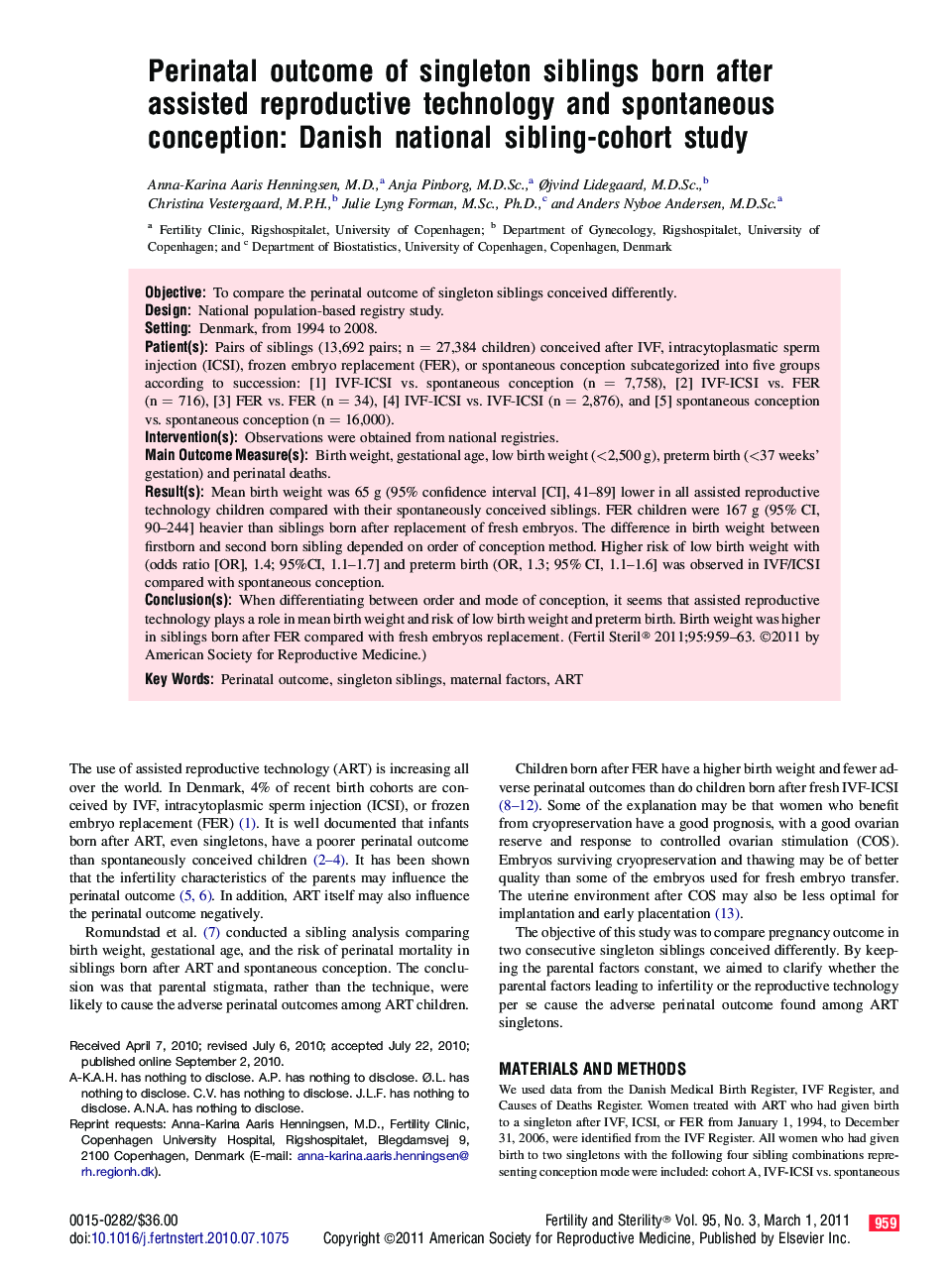| Article ID | Journal | Published Year | Pages | File Type |
|---|---|---|---|---|
| 3932400 | Fertility and Sterility | 2011 | 5 Pages |
ObjectiveTo compare the perinatal outcome of singleton siblings conceived differently.DesignNational population-based registry study.SettingDenmark, from 1994 to 2008.Patient(s)Pairs of siblings (13,692 pairs; n = 27,384 children) conceived after IVF, intracytoplasmatic sperm injection (ICSI), frozen embryo replacement (FER), or spontaneous conception subcategorized into five groups according to succession: [1] IVF-ICSI vs. spontaneous conception (n = 7,758), [2] IVF-ICSI vs. FER (n = 716), [3] FER vs. FER (n = 34), [4] IVF-ICSI vs. IVF-ICSI (n = 2,876), and [5] spontaneous conception vs. spontaneous conception (n = 16,000).Intervention(s)Observations were obtained from national registries.Main Outcome Measure(s)Birth weight, gestational age, low birth weight (<2,500 g), preterm birth (<37 weeks’ gestation) and perinatal deaths.Result(s)Mean birth weight was 65 g (95% confidence interval [CI], 41–89] lower in all assisted reproductive technology children compared with their spontaneously conceived siblings. FER children were 167 g (95% CI, 90–244] heavier than siblings born after replacement of fresh embryos. The difference in birth weight between firstborn and second born sibling depended on order of conception method. Higher risk of low birth weight with (odds ratio [OR], 1.4; 95%CI, 1.1–1.7] and preterm birth (OR, 1.3; 95% CI, 1.1–1.6] was observed in IVF/ICSI compared with spontaneous conception.Conclusion(s)When differentiating between order and mode of conception, it seems that assisted reproductive technology plays a role in mean birth weight and risk of low birth weight and preterm birth. Birth weight was higher in siblings born after FER compared with fresh embryos replacement.
